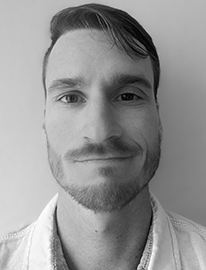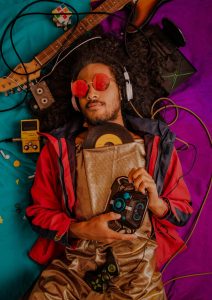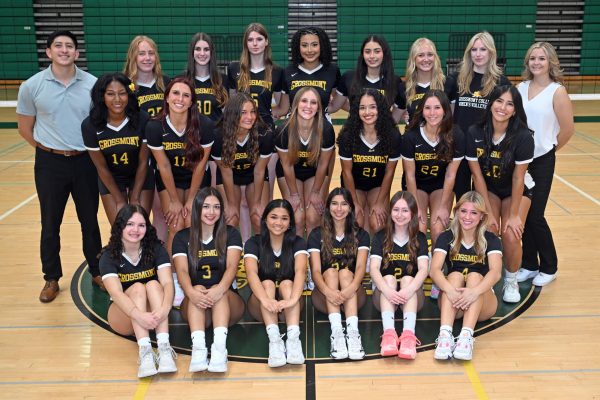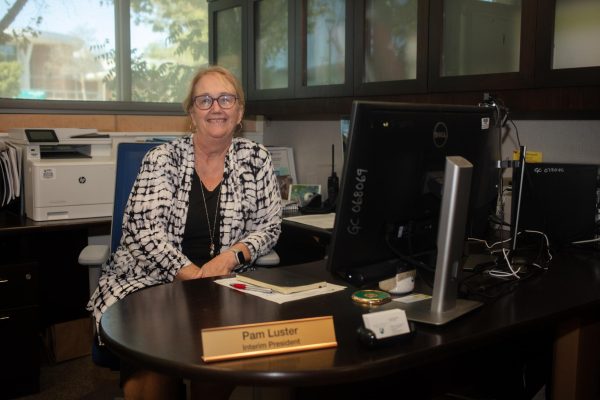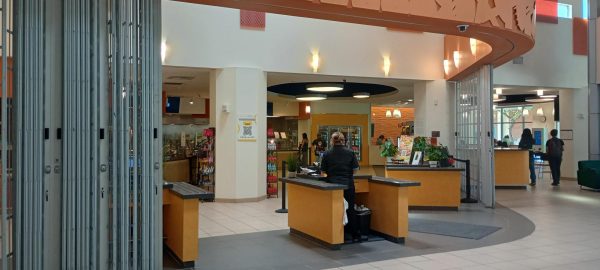Who is Drone Program Instructor Skip Frederiks
If you haven’t heard the story of Grossmont’s Drone Program Instructor, well you’re missing out.
June 19, 2021
Skip Frederiks is nothing short of a character. Arriving to work everyday wearing shorts, a cut-off sleeve shirt and a bandana, Frederiks commands his pilots in training.
The instructor for Grossmont’s Drone Technology Program, Frederiks has been in the drone business since 2013, and how he ended up flying them is a story and a half.
Jet Ski Beginnings
Originally from Fort Lauderdale, Florida, Frederiks started out as a professional Jet Ski racer and was a national champion in 1992. For five years, he did quite well as he was being sponsored by Cedar Watercraft and making good friends with people at ESPN.
But a 1997 charity event involving Brian Austin Green and Jason Priestly from “90210,” as well as Vanilla Ice, would end his racing career.
According to Frederiks, Vanilla Ice went the wrong way on the course and hit Frederiks’ Jet Ski.
“T-Boned me at about 60 plus m.p.h.,” Frederiks said, “so he basically crushed my right femur, broke my right hip, cracked my pelvis, broke my left hip from the impact on the right hip, so I was in intensive care.”
It took several surgeries and a year on crutches before he could walk again.
During this interim period, the friends he made with ESPN asked if he would work with them as a producer. “I was always saying you should put a camera here, you should put a camera there,” Frederiks said. So for the rest of the Jet Ski tour, while he was injured, he worked for ESPN as an associate producer.
A Startling Discovery
After the series, he said he had the bug for the business. One of his friends was able to get him a job starting at the bottom as an assistant with a FOX affiliate in South Florida. From here, he started basically just carrying around equipment but he bought every book and magazine he could get and delved into video and film production.
Frederiks started working for a sports producer named DJ for six months until they were assigned to cover a three week national volleyball tournament called Volapalooza.
During this time, Frederiks said he was driving a van they were using to cover the event, picking up DJ and the rest of the crew in the morning. It was the second week of Volapalooza and everything was going normal until he got to DJ’s apartment.
“I’m knocking on the door and he won’t answer the door, so I thought something was kind of I don’t know…I thought something was really weird,” he recalled. “I get security at his apartment in Miami to open the door; we open the door he’s fucking dead. He’s dead flat on his face, just face-plant dead.”
Finding his former boss dead from a heroin overdose, police were called, questions answered and the ambulance took the body. At this point, Frederiks said he began to think about what needed to be done for the rest of Volapalooza, but there was nobody to turn to. So he took on himself to finish the production, since he was the assistant, which put him in charge.
He left the scene and picked up the rest of the production crew. When asked where DJ was, Frederiks said he told them DJ was really sick, never telling them he actually died of a heroin overdose.
When Volapalooza was over, one of the heads of the network, CG Oliveira, called Frederiks to congratulate the crew over the last few episodes of the production, finding them to be fantastic. When asked where DJ had been, Frederiks explained the situation and how he had no other option but to keep the show running. Without skipping a beat, Oliveira told Frederiks to get his crew and head to Texas to do another job.
Career Changes
Frederiks was now a full-time producer; his career and reputation would build as he worked on a number of projects, finding new and innovative ways to get a shot for extreme sports. Eventually, he was asked to move out to California and his shows were nominated for Emmy and Tully awards. His work would move into directing concerts, music videos and commercials; Skip had his hands in everything.
In 2002, Frederiks said he felt that his then-network was taking advantage of him on his pay scale and work duties, leading him to quit. Looking back, Frederiks said he saw this as a mistake. “You’re only as cool, as good and hot as the job you have at that moment,” he said.
Frederiks clarified that people like Britney Spears or companies such as Volkswagen would contact him, asking if he was busy and if he still worked with FOX. Once he said no about the network, the potential clients would politely say goodbye.
“So it’s just crazy to think I could be so hot when I was at Fox and then not being wanted at all when I wasn’t,” Frederiks said.
Using his contacts he made while networking at FOX, Frederiks worked for tech companies such as Google and Apple, joining the digital revolution and watching and participating as YouTube became the juggernaut of online videos and the first iPhone was released. He eventually worked for a subsidiary of Apple called Wizard Media until the company was sold again, leaving Frederiks without a job..
He had been making $150,000 a year with Wizard Media and had been saving it. So for the next five years, he worked on independent projects, was hired onto other projects and dealt with the financial crisis.
In 2013, Frederiks attended the NAB Show in Las Vegas and saw the first DJI Phantom drone. He recalled going up to the founders of DJI and asking them what the drone could do and what it couldn’t.
Eventually, he asked about putting a camera on it, which led to him applying velcro to the drone and sticking a GoPro on it. Skip first flew the drone in a SciFi movie and felt that it was both a “catastrophe and a clusterfuck,” claiming the movie to be worse than “Sharknado.”
Regardless, he was able to get enough good footage to use in the movie and one of the executives said that watching the drone work was one of the coolest things he’d ever seen. Working with SciFi, Frederiks honed his drone skills and showed several other friends of his in the industry how to fly.
Top of the Field
He became a pioneer in using drones, developing his own techniques, getting gigs and jobs in real estate, and being invited to speak at conferences like Interdrone. At Interdrone, he met a representative who worked for Unmanned Vehicle University who wanted to put Frederiks through their courses and become an instructor. “They made me a line-by-line pilot so I could teach everything and know everything,” he said.
After that, LA Tech got wind of Frederiks and hired him to teach a drone course on what they wanted to develop, and shortly after Grossmont reached out to Frederiks with ambitious plans as well. It is here that Frederiks said he has been able to get his foot in the door of a whole new industry.
“I can see where this thing was going and I thought, ‘You know what?’ I have an opportunity to be one of the guys that like started it or got involved when it was getting started,” he said. “As opposed to just, you know, when I was at Fox I was just another producer, you know, when I was at Apple as just another you know producer so this way at this point, um had the opportunity to be an authority.”
Frederiks has become a voice of authority and a teacher, being able to look back at the dozens of students who have become successful drone pilots, many of them being Grossmont alumni. He has his own company called Hollywood-Drones and has set up a social hub, Drone Connects, for drone pilots and former students to talk and share drone news.
There’s more than just learning to fly drones when taking one of his classes. It also comes with valuable career path connections. If you want to get your foot in the door, Frederiks is the guy to go to, but you have to show initiative, just like he did.
If you’d like to hear every detail of Skip’s story you can check out his full interview here.



